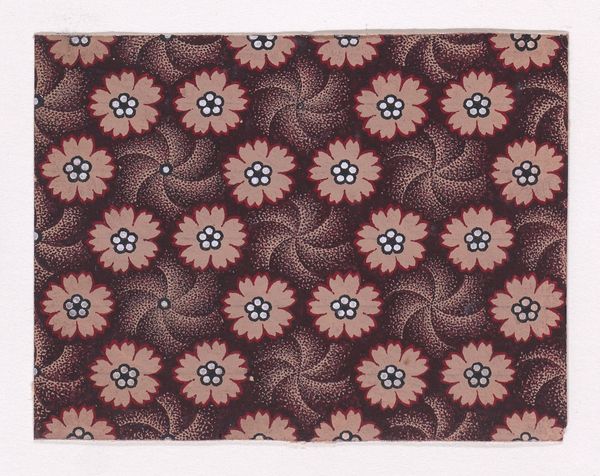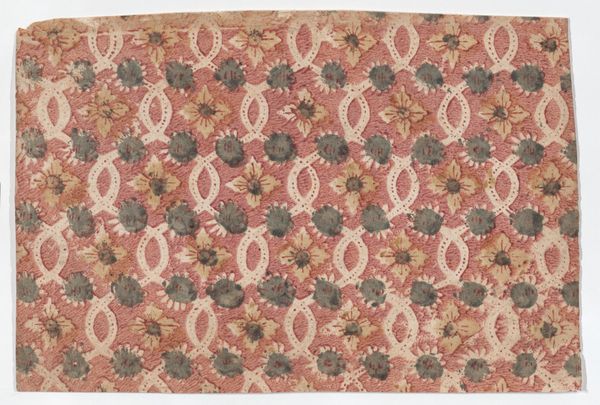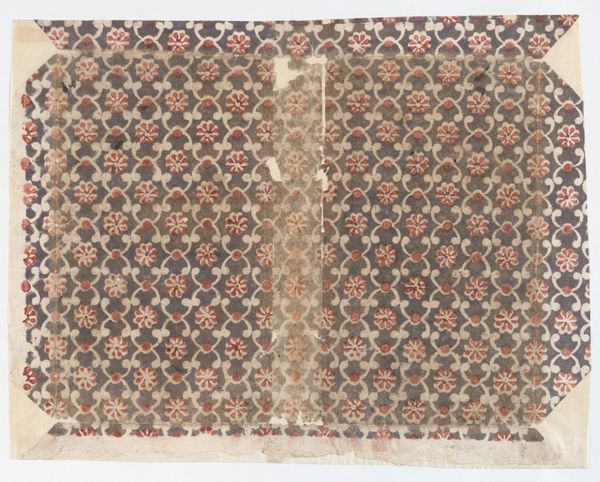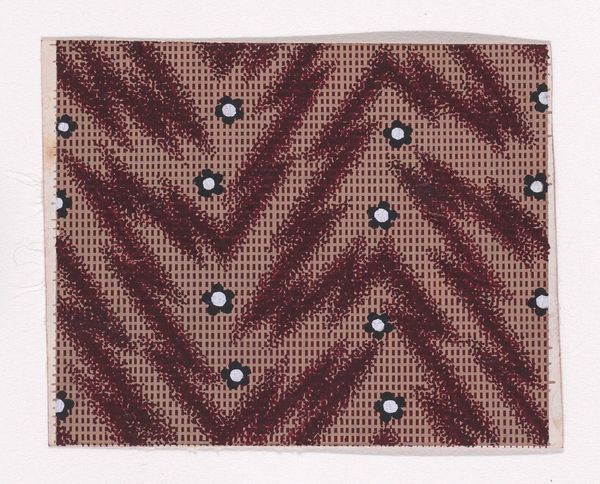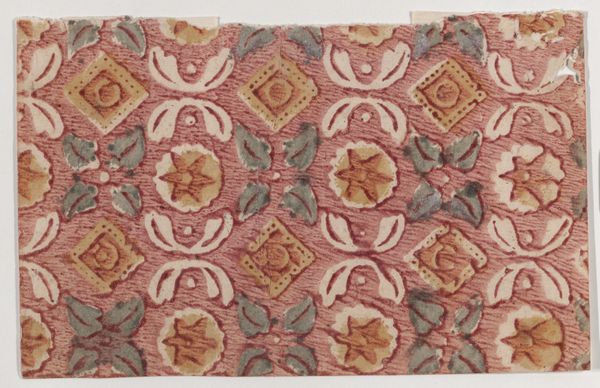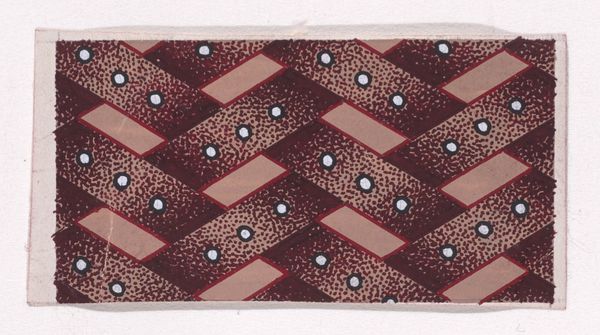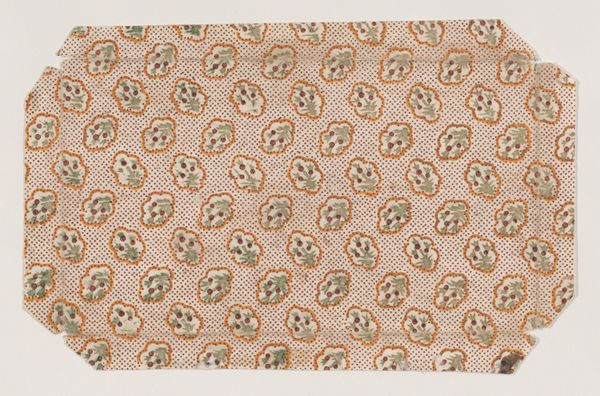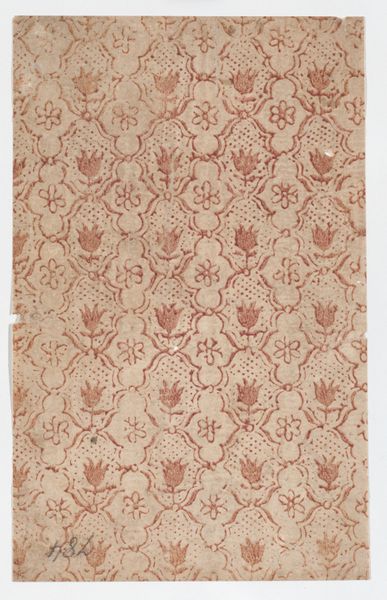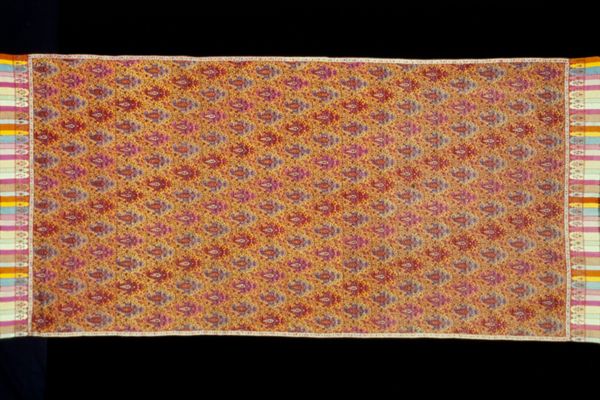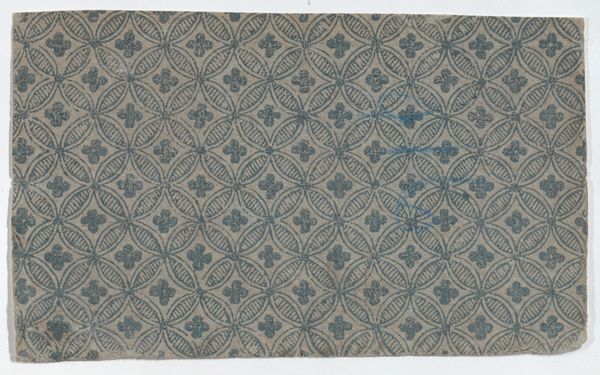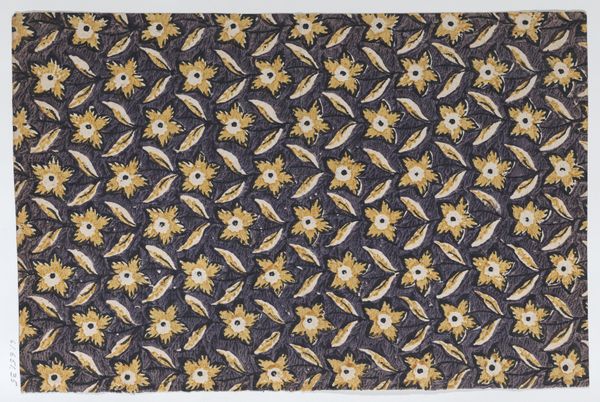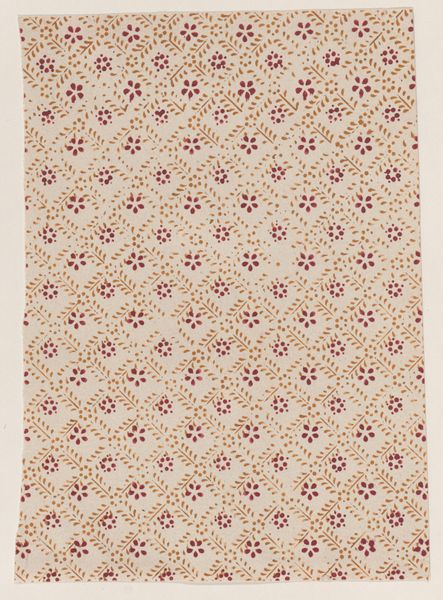
drawing, print, textile
#
drawing
#
organic
# print
#
textile
#
fashion and textile design
#
organic pattern
#
textile design
Dimensions: Sheet: 3 11/16 × 6 11/16 in. (9.3 × 17 cm)
Copyright: Public Domain
Curator: Oh, this feels cozy somehow, like grandma's old quilt, but with a bit more... precision. Editor: Indeed! What we’re looking at is a "Sheet with dot and floral pattern," dating from sometime between 1800 and 1900, housed here at the Met. It is, ostensibly, an anonymous textile or print design. My eye is immediately drawn to the rigid, almost militaristic arrangement of floral motifs and the scattering of dots in the ground. Curator: Rigid, yes, but the hand-done quality softens it. The imperfections in the flowers make them feel, well, less like a repeating unit and more like a community of unique little blossoms. They remind me of dandelions, the kind kids pick and offer you. Editor: Ah, I appreciate that sentiment. You are keying into what structuralists would call the "difference" inherent in repetition. The slight variations in each form prevent absolute uniformity, creating a dynamic tension between order and chaos. Observe how the artist strategically deploys negative space as a compositional tool, giving each motif its individual breath. Curator: Okay, that's putting it fancy! I just see that it's not just a blah, flat thing. It feels textured, alive almost, like it’s trying to break free from being a pattern. Does that make sense? Editor: Perfectly. Semiotically speaking, the textile functions on multiple levels. The flowers could symbolize notions of growth, nature, and beauty while the grid structure and precise distribution may reflect social order and control, common to design motifs during that period. Curator: Hmmm... social order on my grandma’s quilt? Maybe she was secretly making a statement! It just hits me that something so simple, dots and flowers, could carry so much weight and, yes, history! Editor: Precisely. The seemingly innocuous nature of textile design belies its potential as a potent cultural artifact. It’s interesting to imagine how such a piece would manifest across different sartorial applications, too, impacting its original significance. Curator: Right. So, I see this humble piece of cloth not just as pretty decoration, but as something alive with stories. It could have been worn by a farmer, or hung up by the Queen, each life changing what those dots and flowers really mean. Editor: Absolutely! What began as an anonymous design becomes richly and individually defined through application and time. It speaks to the deeply entwined relationship of aesthetic choices, symbolic resonance, and sociocultural influences that is often hiding in plain sight.
Comments
No comments
Be the first to comment and join the conversation on the ultimate creative platform.
